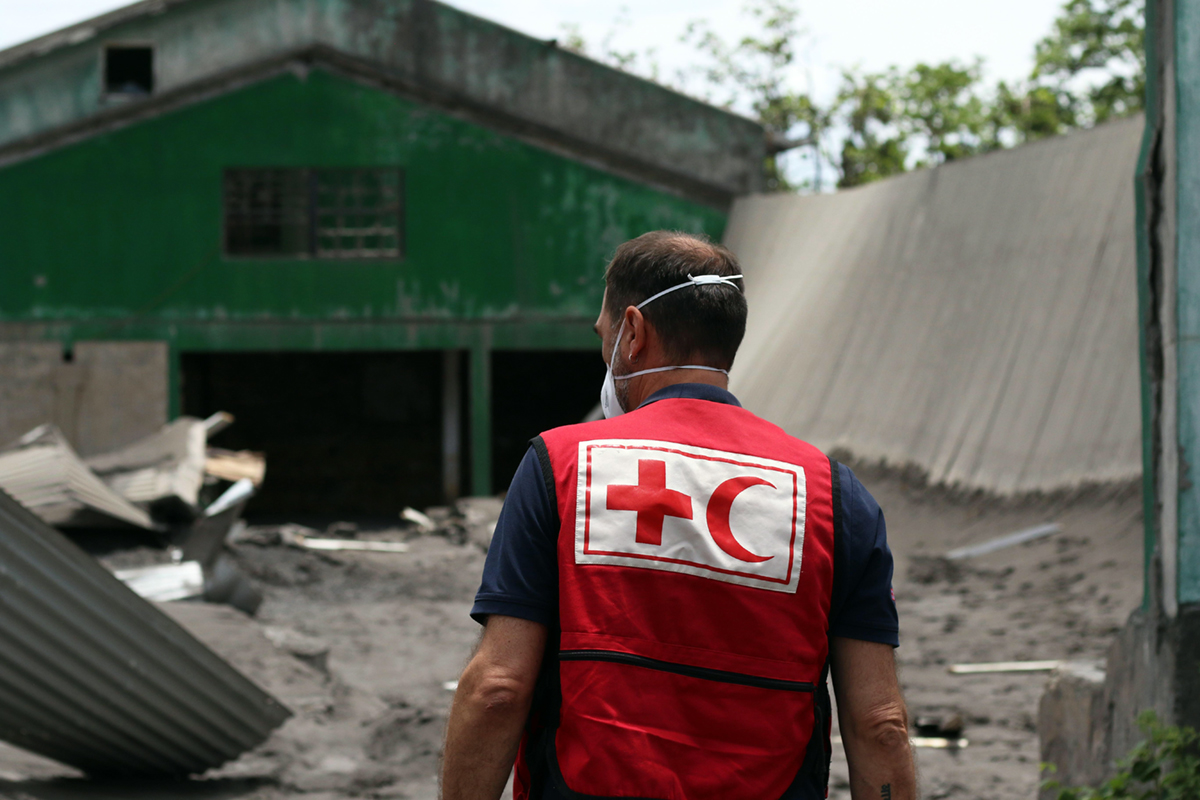Reading time 9 minutes

Impartiality
Under the banner of the Red Cross, impartiality means that we are working for all those in need. Regardless of nationality, race, religion, origin or political opinion. Recognition and respect for the Red Cross emblem is literally vital. It will therefore be clear that misuse and imitation of the emblem are included in the Criminal Code. What can you do if you see someone using the emblem illegally? Perhaps you can first kindly contact the person or organisation concerned and explain why the use of the emblem is not allowed. Can't you solve it together? Please send an e-mail to embleem@redcross.nl. A colleague of the Humanitarian War Law Team will then contact you.
Reading time 9 minutes
The power of the emblem
A red cross on a white background. A simple symbol with different meanings. For those in need it means help and comfort. In conflict situations, it gives hope and confidence. It evokes protection and pride amongst colleagues. Let’s dive into the history of Red Cross emblem.
Henry Dunant was shocked by what he saw, travelling past the battlefield of Solferino in Italy. Wounded and dead soldiers left behind, as far as the eye could see. In his time, the second half of the 19th century, new firearms were used that had the power to injure large groups of soldiers. Dunant was in shock. Together with citizens from the area, he helped where he could. This was the go-ahead for a neutral, impartial volunteer organization to help the wounded on the battlefield. In setting up this new aid organization, Henry Dunant and the other Red Cross founders wanted to create a single distinctive emblem to identify the aid workers. Not as a British, Italian, French or German, but as an impartial aid worker. Only in this way would they be able to do their work safely. The symbol they chose in 1863 was that red cross on a white background. Later, two additional emblems were adopted: the red crescent (1929) and the red crystal (2005).
Don't shoot
The Red Cross emblem has now been a symbol of protection for more than 150 years. It means: don't shoot, neutral rescuers are at work here. Jan Tijmen Ninck Blok, legal adviser on international humanitarian law: “Even people who are not familiar with the Red Cross as an organization or the rules of international humanitarian law can recognize the emblem at once. On a battlefield it is immediately clear that aid workers are at work here.” By the way, the emblem is not the same as the Red Cross logo. That contains the emblem, but always in combination with the text Red Cross.
Abuse
The powerful symbol is at the same time vulnerable to abuse. Due to the emblem's crucial role in wartime, it is also important that the Red Cross symbol is handled properly in peacetime. In the Netherlands, for example, during peacetime, only the armed forces and the Dutch Red Cross are allowed to use the Red Cross sign. Abuse is prohibited and punishable.
Jan Tijmen: "Abuse undermines the protection of the emblem. When every dentist, general practitioner or other medical institution is going to use this image as a logo, its meaning will be increasingly questioned. It’s also true that abuse does not always happen on purpose. We therefore always try to start a conversation with organisation that or person who uses the logo incorrectly. For example, not so long ago we had contact with a manufacturer of cleaning products which had incorporated an identical red cross in its logo. When we approached the manufacturer about this, he was shocked and immediately put it right on the website. However, he also had a whole array of cleaning products with that logo on it. If he had to destroy it, it could have destroyed his company too. Of course nobody wanted that. We have agreed that he can sell his stock, but then switch to a logo without the Red Cross emblem."
Demonstration Museumplein
Unfortunately, abuse also happens knowingly. Like recently during the protests against the corona policy on the Museumplein in Amsterdam. Some protesters wore a band with our emblem on their arms. Jan Tijmen: "We strongly condemned this via Twitter. This use of the emblem is of course not allowed. It creates a false expectation when help is needed. After our statement on Twitter, we got a lot of spicy reactions stating that we should have been there. The trick is to explain clearly that we have a neutral position and that we do not interfere in public or political discussions. We condemn the misuse of the emblem, not the demonstration itself."


At the forefront
Over the past 150 years, the emblem, in all three variants, has become a universal sign of hope for people in humanitarian need. In conflict areas, it helps our colleagues to do their work as safely as possible and to help victims. Regardless of their religion, origin or political opinion. For example, we are currently working in hot spots such as Syria and Yemen, in places where not all aid organisations can or are allowed to work. Here rescuers are often in the front line with only the emblem as protection.

In addition, the symbol evokes hope and confidence for people in need. Whether they are victims of a devastating hurricane, seek refuge in a refugee camp or need a helping hand with a corona vaccination. It is reassuring: the Red Cross is here, you are not alone.